Window Restoration
The wooden window sash that was designed and constructed in the 18th and 19th centuries is an elegant joinery solution to the problem of illuminating buildings in a time when large flat panes of glass were difficult to make and artificial light was expensive and inefficient. Historically, windows were one of the most important and expensive architectural features of a building. Utilizing little more than strait grained wood, thin glass and natural glazing putty, the double hung window in particular is able to let light in, keep uncomfortable weather out, and circulate airflow in the summer. Old windows continue to be important to the mechanics of historic buildings as well as admirable architectural and woodworking achievments.
Preservation Virginia (APVA) has listed historic wooden windows as one of Virginia’s most endangered resources. According to a statement made by APVA, “Historic windows are destroyed daily in lieu of new, inferior windows. Savvy salesmen convince owners and architectural review board members that replacement windows are superior to historic wooden windows when the truth is, in many cases, historic windows have lasted over 100 years. With some maintenance, these historic windows can be airtight, weather resistant and can last another 100 years – longer than any new wooden window or vinyl clad window.” I agree whole heartedly. Historic windows are indicators of old style craftsmanship that help define the character of a house. Wavy crown or cylinder glass graces the hand-worked joinery like facets on a jewel. Too many historic windows have been thrown out in the name of renovation and replaced with inferior products that are not designed to last. We can tighten up old drafty windows, allowing them to function even better than they were intended to function. With proper restoration, old windows can be just as, or in some cases more, energy efficient than double-paned replacement windows and still maintain your homes historic integrity. Below is a link to a recent study that concludes that, even with incentive programs, efficiency upgrades on historic windows can save twice as much money over a fifty year life cycle than high quality replacements. If necessary we can reconstruct or build replicas of old windows that will last for many generations.
Saving Windows, Saving Money: Evaluating the Energy Performance of Window Retrofit and Replacement
The House Joiner - Arnold Zlotoff Tool Museum: Eight minute film depicting historic sash construction that may help instill an appreciation for the thing that so many replace and throw out. Click Here to Watch
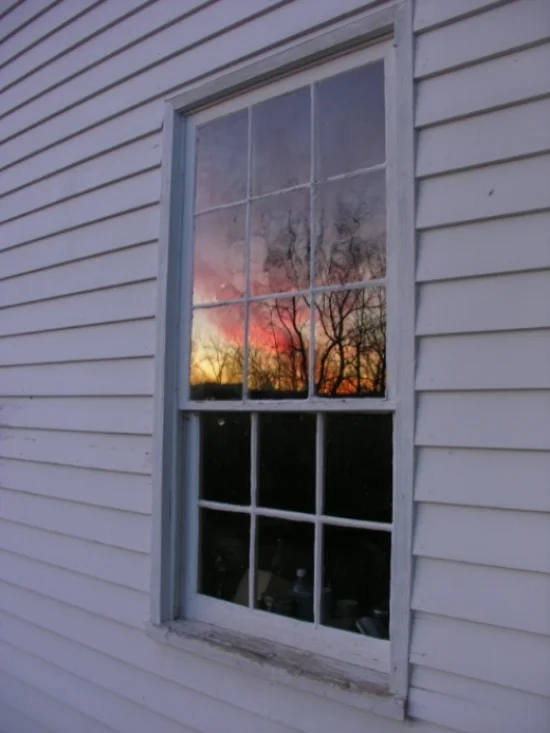
Historic Window
Even after 100s of years, many well-built windows only need minor maintenance and improvements.
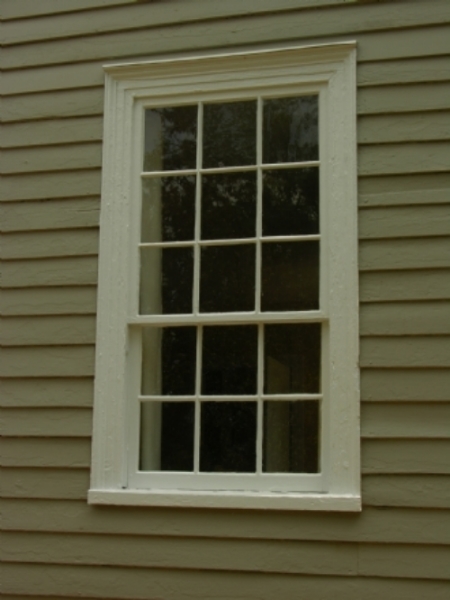
Finished product - Stinson Vineyards c.1796
Fully restored eighteenth century window. Frame was repaired, trimmed to fit better, weatherstripped, reglazed with traditional linseed oil putty, and painted. With occasional maintenance these windows will be good for another 100 years.
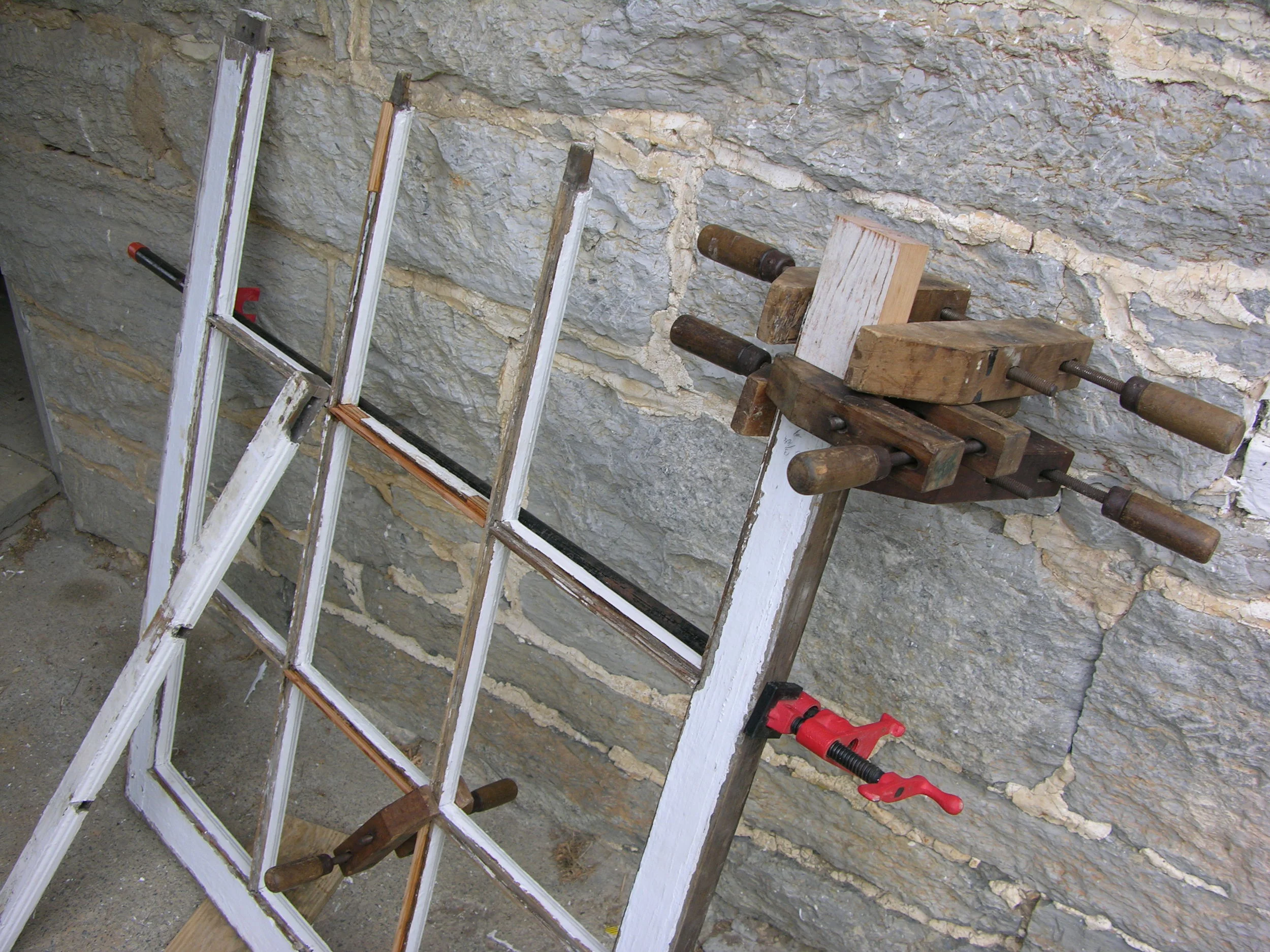
Nine pane sash - circa 1796
Mid-restoration, this photo shows the upper sash from previous photo. An applied dutchman repair will be carved into a tenon to accept the top rail, and new glazing bars have been spliced into the muntins to accept the original glass. With the added weatherstripping this window will out preform the original for years to come.
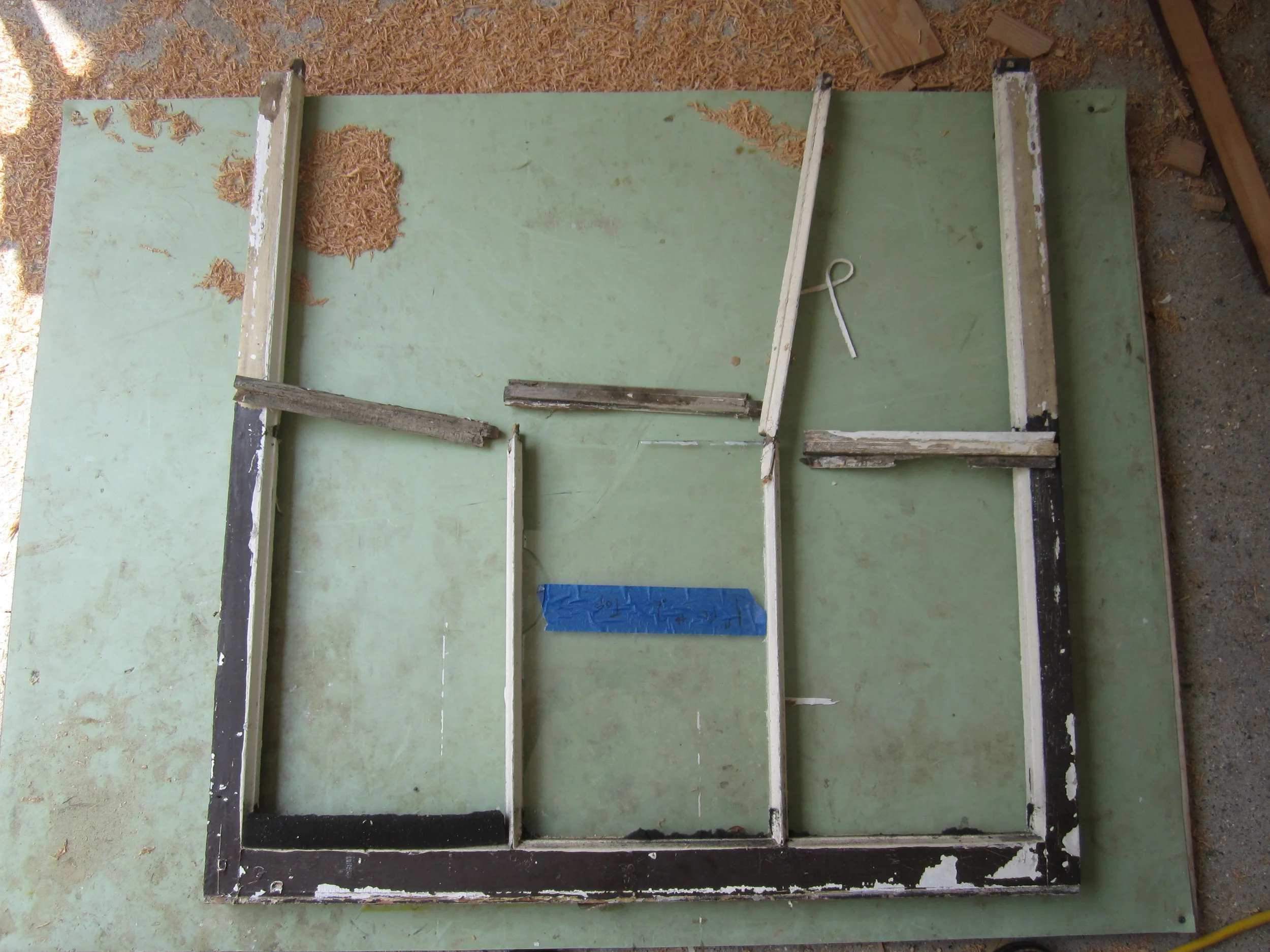
Six pane sash in need of repair
The design of traditionally built windows allow even severely damaged sash to be restored when considered significant. By removing four pegs, the sash will come apart and any piece can be duplicated and fitted into the original framework.

Typical sash repair
Two muntins and a spliced stile were tenoned into the existing mortises to revive a sash from the 1840's. Most historic sash tend to be in fair condition but generally a few sash in every house need extra attention.
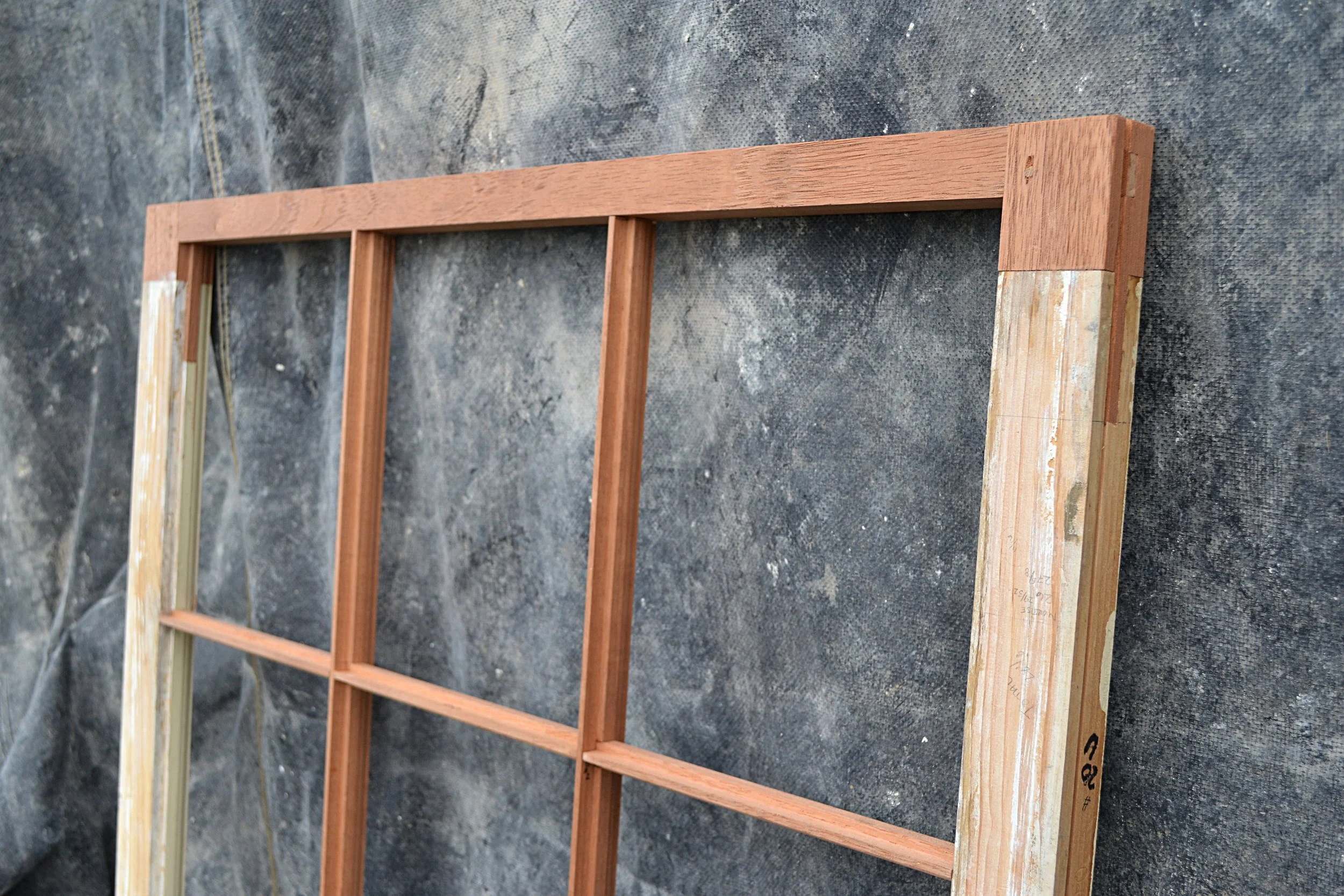
Extensive repair
In this case, a rotten meeting rail and stile tenons as well as damaged dividing muntins were scheduled for replacement by an architect. Sometimes an extensive restoration is necessary to save historic material, especially in museum settings. Here we used Spanish Cedar to ensure a long lasting repair. This sash is from a c. 1760 house that was occupied by Ulysses Grant as his headquarters for 9 months during the Siege of Petersburg in 1864.
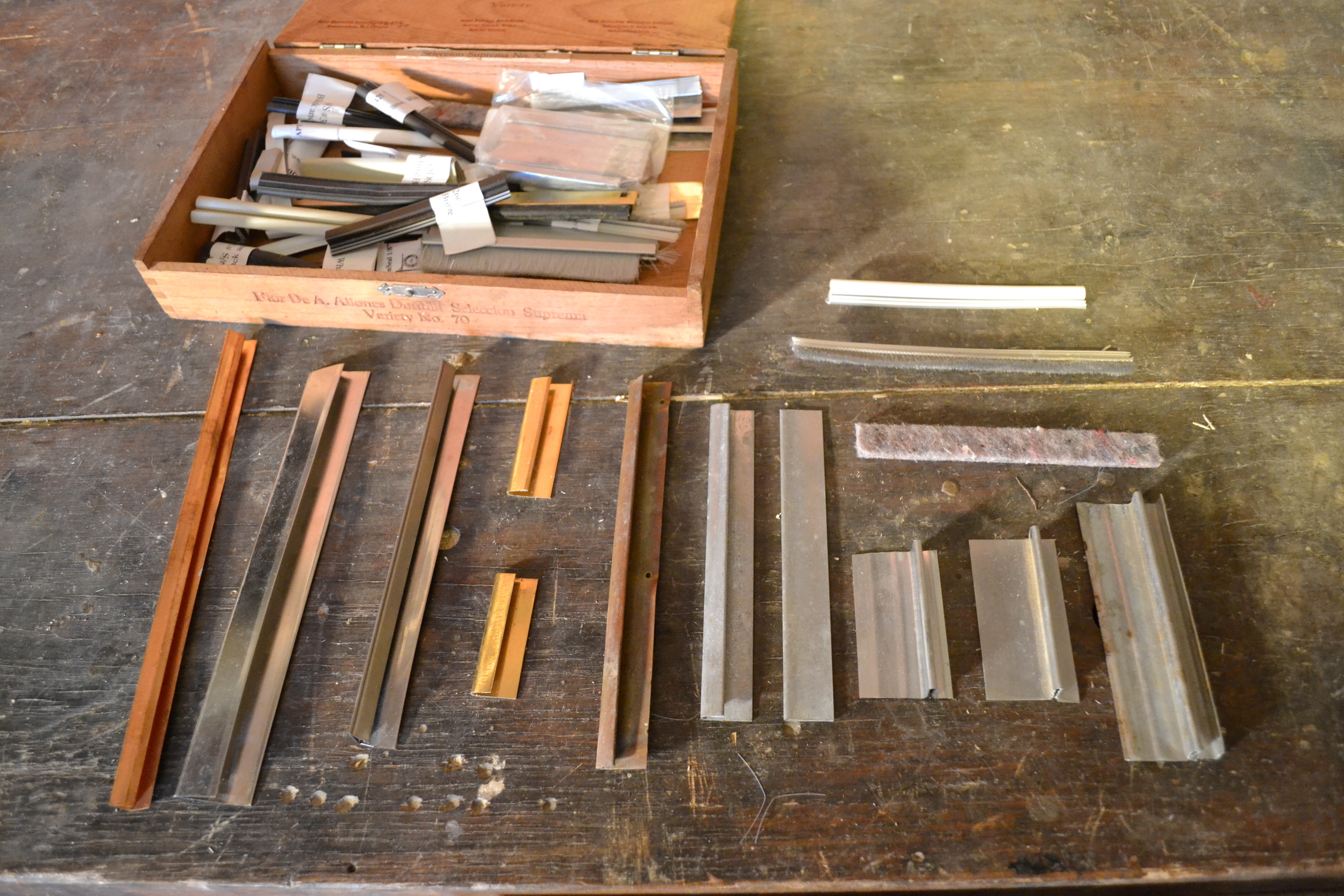
Weatherstripping
Air infiltration is the primary reason that old windows become inefficient. Weatherstripping will help reduce this infiltration significantly. A properly stripped window, combined with the double glazing effect of a quality storm window, will outperform the efficiency and longevity of many replacement windows. These are some of the profiles we use. We have found many of these same stripping styles still functioning on windows after well over 100 years.

Installed weatherstrip
Different window styles and designs have different requirements for sealing out drafts. A lot of trial and error in addition to study of historic precedent, has helped us realize successful draft free installations. This design for a double hung sash from the 1870's, uses felt, bronze, and a fin-seal set into a kerf routed into the sash that will allow for smooth operation.
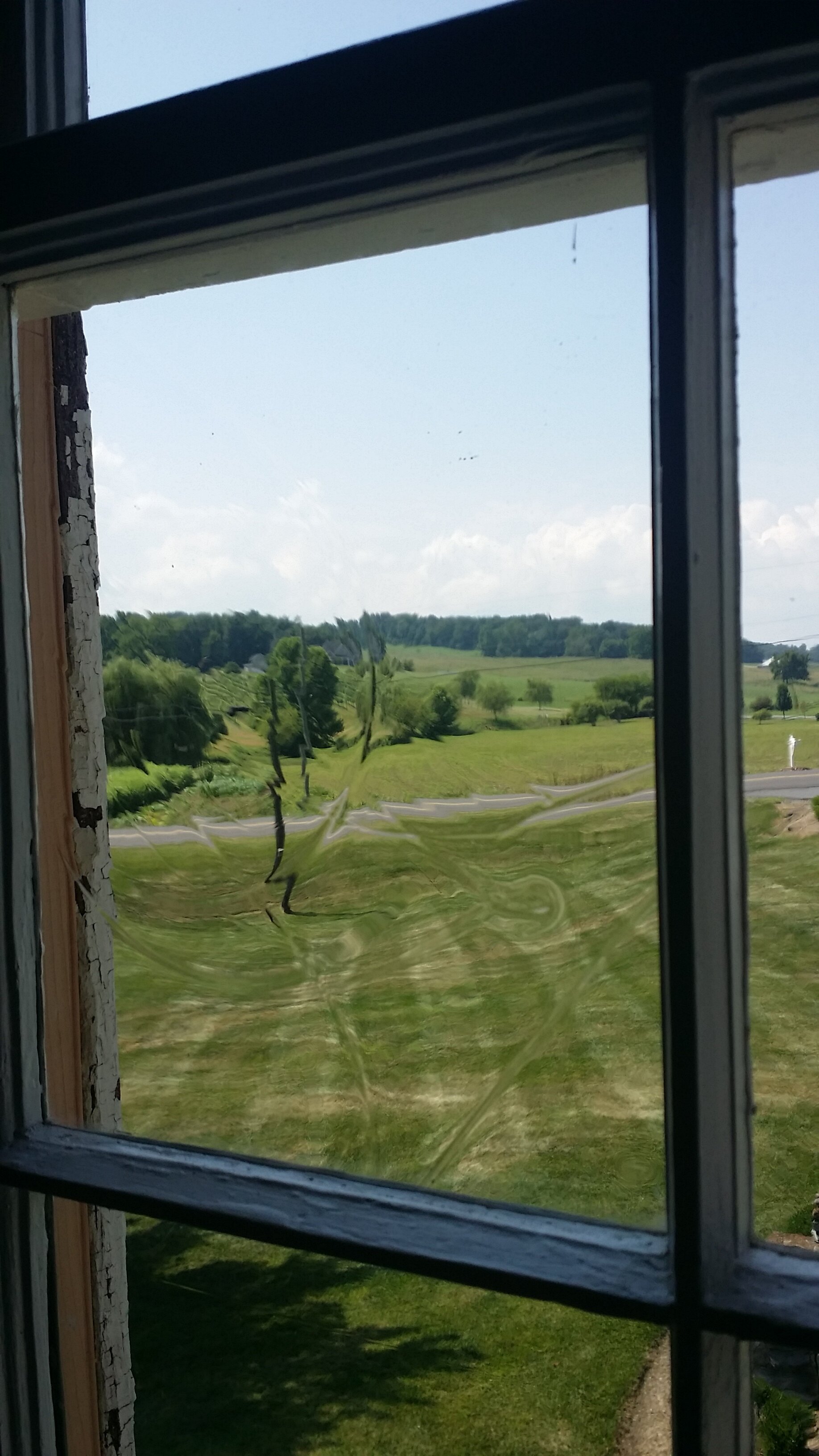
"wavy glass"
An example of eighteenth century crown glass. The earliest American glass was blown by mouth, flattened with centrifugal force, then cut. This process left irregularities that are unique to each piece. Refracted images opposite the glass often are greatly distorted but the primary purpose of glass sash in an era before electric light was to let in light. In early America, if you were fortunate enough to have glass windows, this is how you saw through to the outside world.
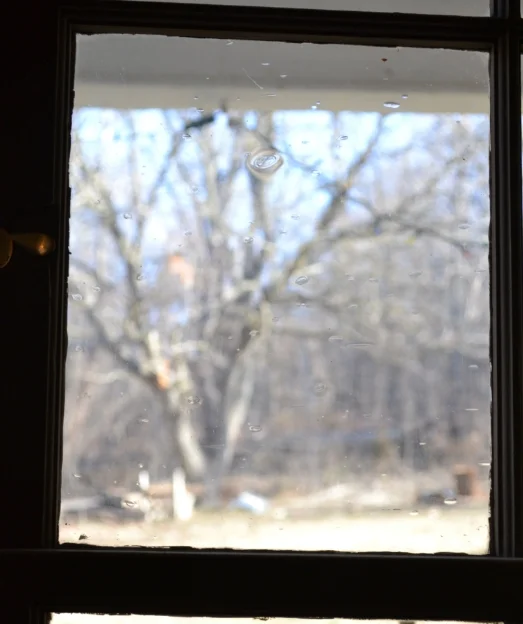
Cylinder glass
Probably the most common type of old wavy glass is cylinder glass. The molten glass was blown into large cylinders, then cut and flattened to make larger panes. It is sometimes characterized by small bubbles called seeds and vertical lines called reams. This was the dominant style in the nineteenth century until plate glass became the norm in the 1920s and later "float" glass.

Sash making
Sometimes it is necessary to recreate a sash to match a style when the original is too far gone. We use similar sash making techniques and joinery to ensure that the new sash will be as durable as the historic windows tend to be.

Sash Replication
Strait grained heartwood Douglas Fir and linseed oil putty hold the original glass for this sash reconstruction. Sash constructed with traditional mortise and tenon joinery needs no glue and can be dismantled for future repairs when necessary.
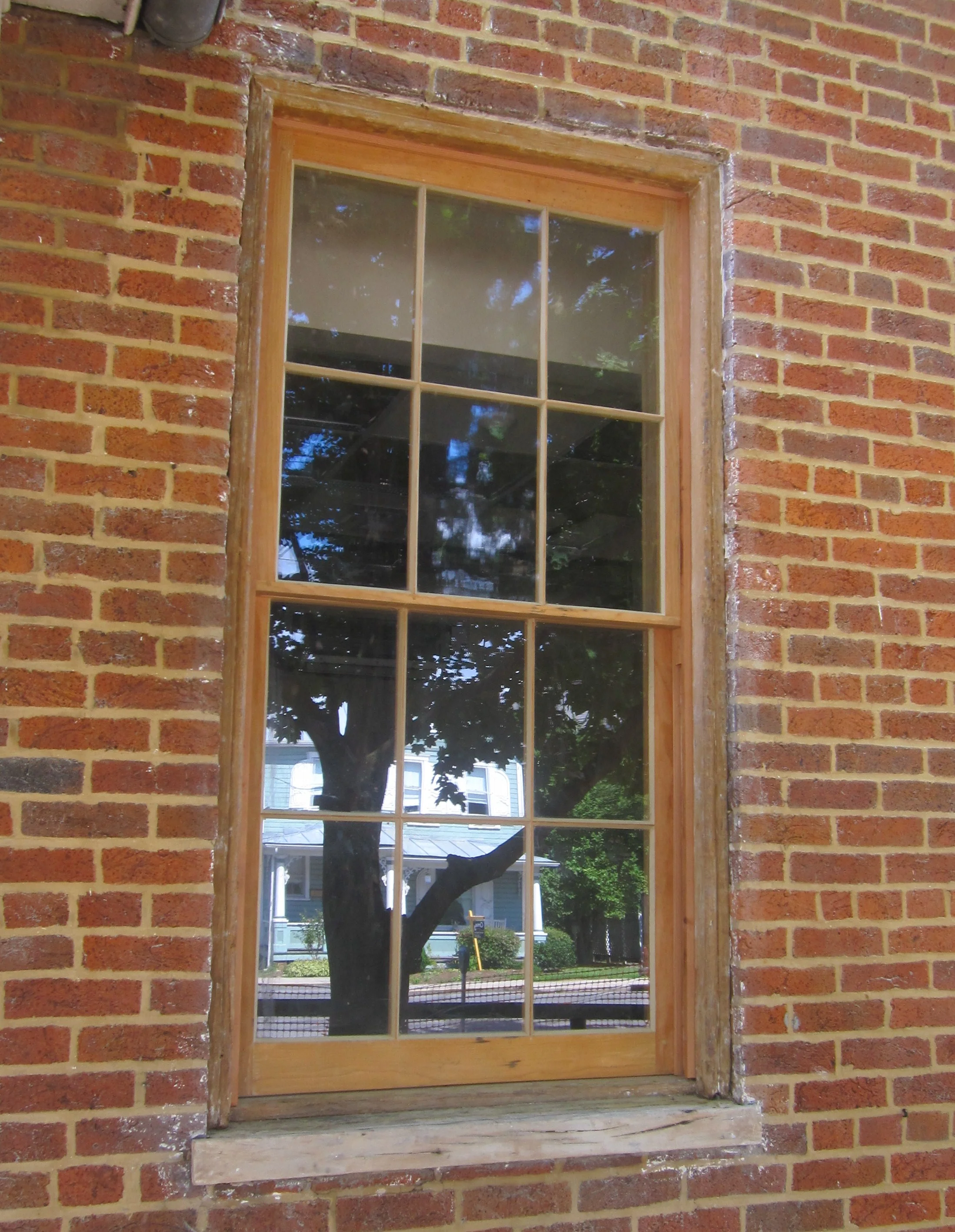
Sheriffs Building, Romney, WV
Original 1830 window openings stripped of paint, repaired and fitted with recreated sash. Weatherstripped, glazed and ready for paint.
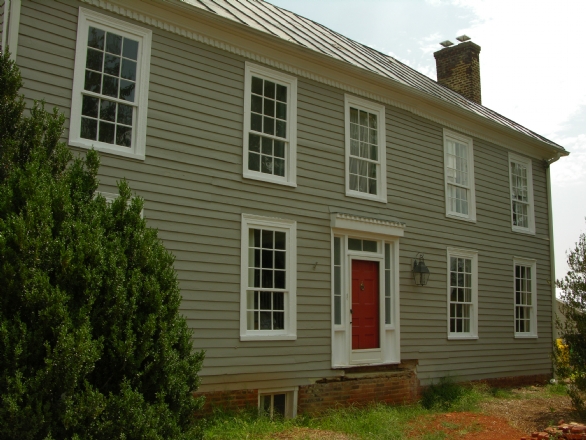
Stinson Vineyards, c.1796, White Hall,Va
Front facade of a federal farmhouse with fully restored windows.
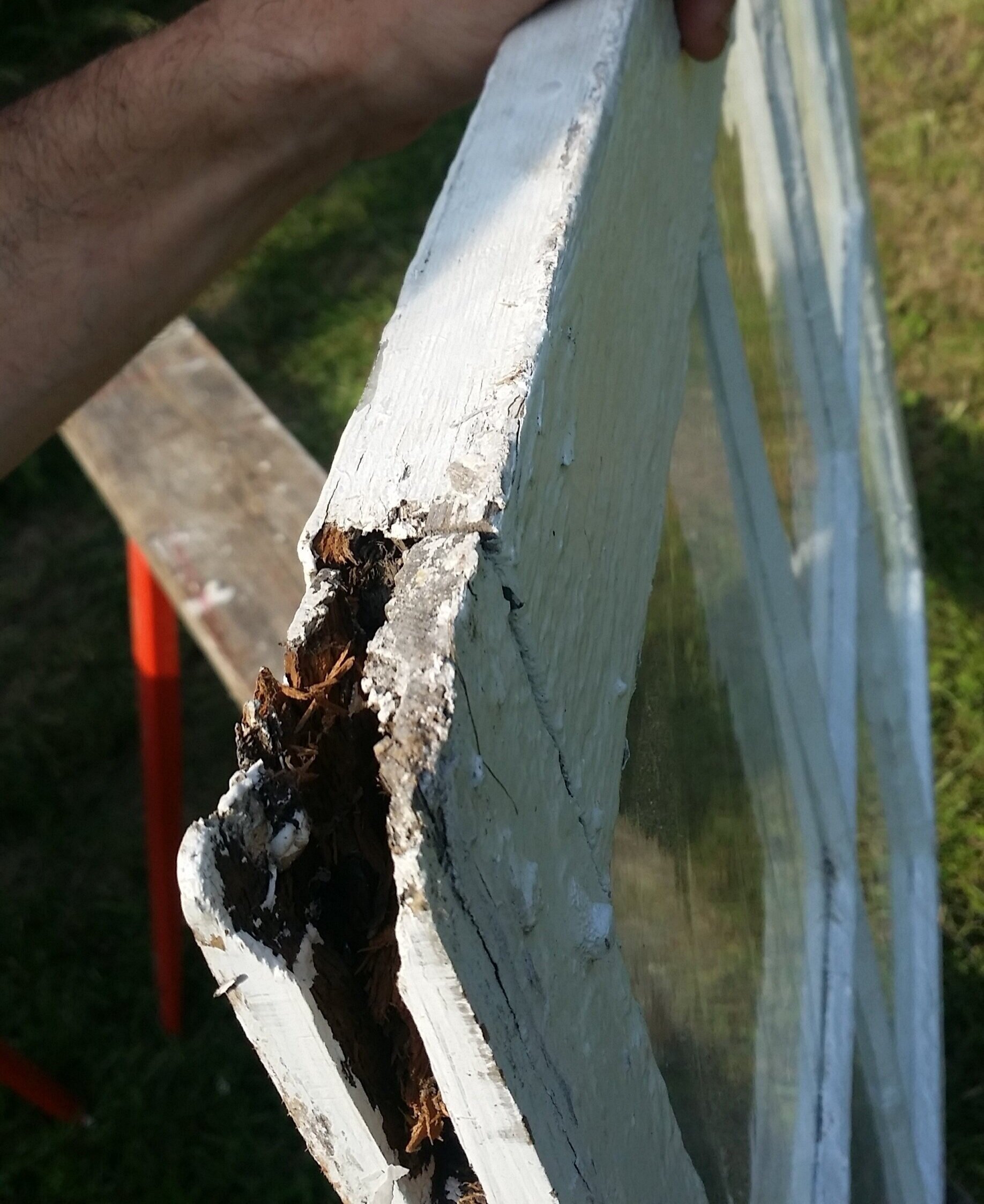
Rot on an 18th century sash
Rot on the bottom of this sash had compromised the mortise and tenons of both the style and rail. This is a common problem when a window sill does not drain properly or cannot dry out.
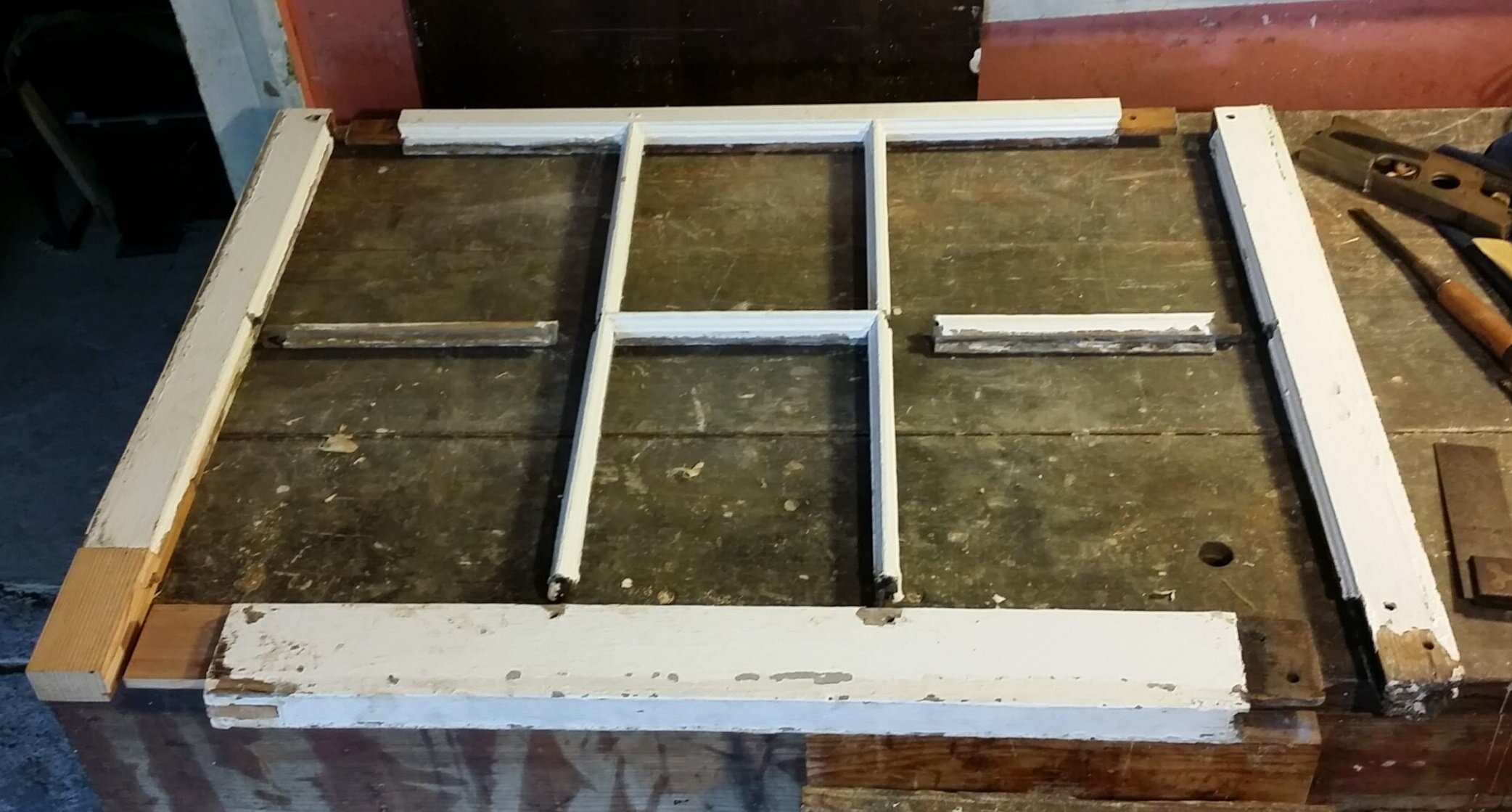
Repair process
The design of traditionally built windows allow even severely damaged sash to be restored when considered significant. By removing four pegs, the sash will come apart and any piece can be duplicated and fitted into the original framework.
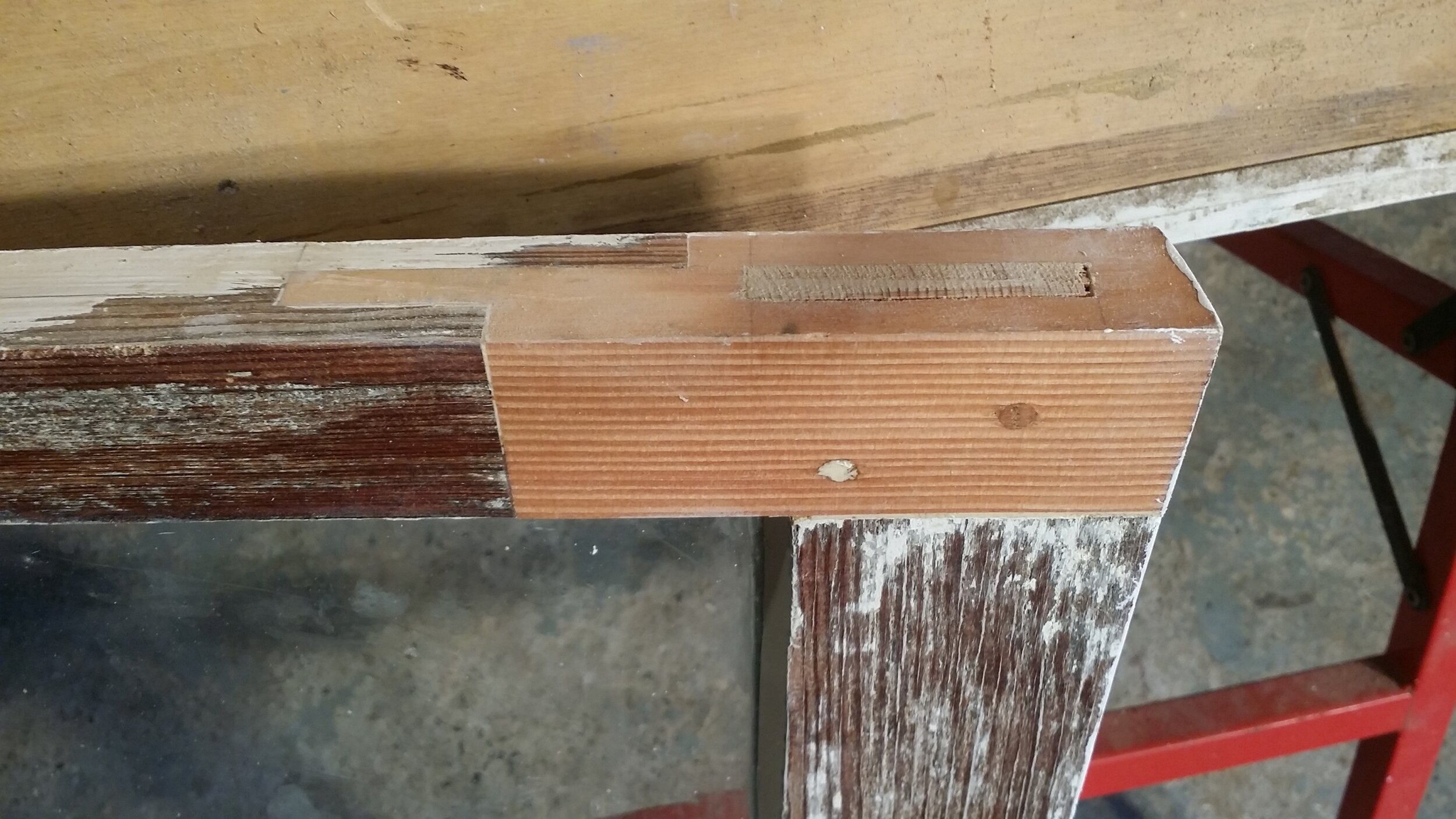
Dutchman repair
New wood was fitted into both the stile and rail to complete the mortise and tenon construction without replacing too much historic material.
